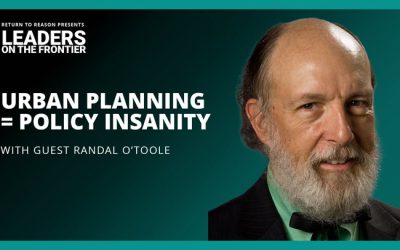Canada’s first subway line, which opened in Toronto in 1954, was 7.4 kilometers long and cost $6.8 million per kilometer—$76 million per kilometer in today’s money. That seems a bargain compared to a subway line Toronto is now constructing at a projected cost of well...
Urbanization
Building 21st Century Transit Systems For Canadian Cities
Policy Series 241
Revival of Rail Transit in Canada Questioned by Latest Policy Report
WINNIPEG, [March 12 2024] Canada's transit landscape is experiencing a profound transformation as eight major cities embark on the ambitious journey of developing rail transit systems. This marks a significant departure from the conventional wisdom of the 1950s when...
What Will Become of Cities?
Brownstone Institute
Featured News
There’s Nothing Fair About Canadian Health Care
For the past 14 years, Vancouver surgeon Dr. Brian Day has led the charge for health-care reform, pushing for the right of patients to pay for private care if their health and well-being are threatened as a result of waiting in a stagnant and overburdened public...
Transformers: More than Meets the Eye
The path to net zero, based on the much disputed belief that carbon dioxide is a pollution, is more steep and impractical than most people realize. Replacing fossil fuels with clean electricity will require much more power generation and a greatly upgraded grid to...
Leaders on the Frontier: Debunking Myths about Urban Sprawl with Randal O’Toole
David Leis' guest here, Randal O'Toole has dedicated decades of research and analysis to policies that help citizens live and thrive rather than be held hostage to the demands of green belts and bureaucratic restrictions. In this conversation he debunks myths about...
Playgrounds for Elites
The revival of America’s core cities is one of the most celebrated narratives of our time—yet, perhaps paradoxically, urban progress has also created a growing problem of increasing inequality and middle-class flight. Once exemplars of middle-class advancement, most...
The World’s Ten Largest Megacities
Originally published for The Huffington Post. The world is rapidly becoming urban. More than half the world’s 7-plus billion people live in urban areas (urban cores, suburbs and small towns). Nearly a quarter of the population lives in “cities” of a million or more....
Urbanization and the Good News About World Poverty
Originally printed in the Huffington Post. The history of humanity is a history of poverty. This is illustrated in the work of University of California, Davis economist Gregory Clark. According to Clark (Farewell to Alms: A Brief Economic History of the World):...
Mid-Sized Cities Can Attract Tourists by Being Themselves
People flock to major cities to take advantage of unique experiences. In theory, most of the types of activities tourists seek out can be replicated most anywhere, but people are willing to pay a large premium and go out of their way to see a show on Broadway, or eat...
Craft Beer: A Tool for Urban Revitalization?
Most people don’t think of breweries as tools for economic development. In fact, the default assumption among politicians seems to be that alcohol is an unavoidable evil. However, the growth of the craft brewing industry has been a major boon to urban revitalization...
Heated Sidewalks are Worth Consideration
People laughed when Toronto Mayor Mel Lastman called in the army to help clear snow in 1999. But snow and ice present many challenges for municipal government. When snow is plowed to clear the way for vehicles, parking becomes difficult, and icy sidewalks are also...
Heated Sidewalks are an Option for Some Canadian Neighbourhoods
Snow presents many logistical challenges for Canadian cities. Street parking is difficult; snow plows exacerbate traffic congestion; excessive snow needs to be trucked out of the core; and melting snow turns streets and neighbourhoods into swamps. These challenges are...
Urban Planning For People
Originally appeared in newgeography.com The recent publication of the United States Department of Energy, Energy Information Administration's (EIA) 2014 Annual Energy Outlook provides a good backdrop for examining the importance of current information in...




